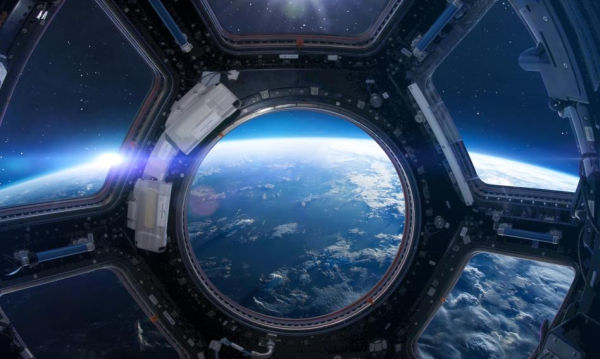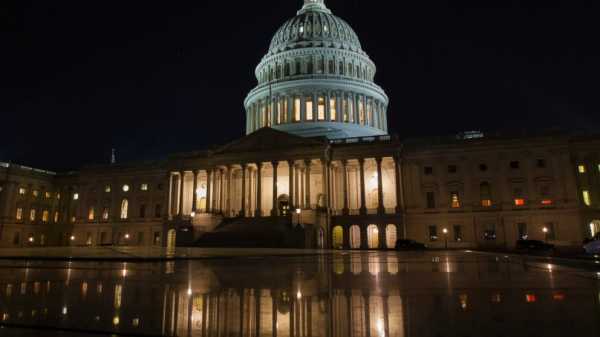Conspiracy theories about the ISS and the Moon landing persist, despite scientific evidence. The collapse of traditional structures, such as religion and local communities, forces people to seek meaning elsewhere, Will Sommer, author of the book “Believe in the Plan: Where QAnon Came From and How It Messed Up America,” told PAP.


The astronauts of the Ax-4 mission, including the Pole Sławosz Uznański-Wiśniewski, have already returned to Earth.
During the mission, conspiracy theories questioning the astronauts' presence in space began to emerge online. One of the most frequently discussed themes was the surprisingly good quality of the video link with the ISS, with only occasional interruptions during conversations with the Polish astronaut. This gave rise to false claims that Uznański-Wiśniewski was not actually in orbit because “such a good internet connection is impossible in space.”
This theory has no scientific basis. As radio amateur Jacek Matykiewicz explained in an interview with PAP, the ISS has been using advanced satellite infrastructure for years, enabling the transmission of large amounts of data in real time. The station connects to Earth via geostationary satellites located 36,000 km above the planet's surface. Connections are maintained by automatic switching between satellites during the station's orbital motion. Occasional interruptions in transmission are caused by these switches. “This transmission speed allows for clear conversation and good image quality. Other factors also affect the quality of the connection, such as the station's illumination by the Sun or space debris in the beam's path, which can cause interference,” Matykiewicz told PAP.
Will Sommer, journalist and author of the book “Believe the Plan: Where QAnon Came From and How It Has Messed Up America,” noted in an interview with PAP that we live in times of a “crisis of credibility.”
“Institutions that should provide answers are losing trust. People are seeking alternative sources of knowledge, often stumbling upon bizarre online communities,” Sommer said. “The pandemic has shown how easily misinformation spreads. The collapse of traditional structures, such as religion or local communities, is causing people to seek meaning elsewhere.”
From the very beginning, space exploration has been controversial and has given rise to conspiracy theories. One of the most well-known is that the 1969 American moon landing was faked.
The interview, which was allegedly conducted in May 1999 – two months after Stanley Kubrick's death – generated particular controversy. In the 2015 film “Shooting Stanley Kubrick,” actor Tom Mayk, playing the director, says:
“I deceived the American public. With the help of the government and NASA, we faked the moon landing. All the landings were fake, I filmed them all.”
Many people took this fragment as Kubrick's true confession, unaware that it was fiction created for the film. The filmmakers deliberately misled viewers by citing an “agreement” with the director stipulating a 15-year embargo on publishing the interview.
In 2022, photos circulated online, purportedly depicting a moon landing set in a secret studio somewhere in Houston, Texas. Journalists quickly determined that these were the work of artificial intelligence and came from the Facebook page “AI ArtUniverse.” However, many saw them as definitive evidence supporting theories that Americans supposedly didn't go to the moon and that Stanley Kubrick filmed the whole thing as if he were reshooting “The Odyssey.”
When asked why he would do this, Tom Mayk as Kubrick in “Shooting Stanley Kubrick” replied: “because you couldn't fly there.”
– Back then, it wasn't about flying to the Moon for scientific purposes, because the conquest of space was fueled by political fuel – Mariusz Słonina, an astronomer, programmer, and space security expert, told PAP in 2024.
“President John F. Kennedy's famous speech about the flight to the Moon and a safe return to Earth by the end of the decade reflected a desire to show that Americans were better than Russians. The Soviet Union had been demonstrating its dominance in space since 1957, when it launched the first Sputnik. Four years later, Yuri Gagarin became the first man to fly into space, and in 1965, Alexei Leonov was the first to perform a spacewalk. All of this motivated the United States to beat Russia in some way. Landing on the Moon was a concrete achievement that the entire country could undertake, and the entire nation could be proud of,” Slonina said.
Conspiracy theories surrounding the Moon have been the subject of numerous films, both documentaries and satirical, including “Operation Lune,” “The Dark Side of the Moon,” and “Operation Avalanche.”
Conspiracy theorists, however, have been most attentive to Kubrick's 1980 film “The Shining”—Kubrick's famous film based on Stephen King's book starring Jack Nicholson. The film doesn't concern space missions or the Moon. Despite this, some have sought hidden signs by the filmmaker, through which he supposedly shared a secret too great to bear alone. Patterns resembling the shape of the Cape Canaveral spaceport were spotted in the floor covering of the Overlook Hotel in the film. The protagonist's son, Danny, strolls through the abandoned hotel in a sweater emblazoned with “Apollo 11.” Kubrick also changed the hotel room number from 217—as in the novel—to 237; that's approximately 237,000 miles from Earth to the Moon.
Skeptics who believe the Moon mission never took place question why, among other things, the photos show the American flag fluttering in the wind, even though there is no atmosphere on the Moon, and therefore no wind. NASA's official website states that “before launch (in 1969), ground crews attached a horizontal bar to the top of each flag to ensure its visibility in photos and television broadcasts for the American public.”
In 2002, one such skeptic was punched in the face by Buzz Aldrin – the second man on the moon – after calling Aldrin a liar.
According to data from 2019, on the occasion of the 50th anniversary of the landing, approximately 6 percent of Americans still believe the Apollo 11 mission was a hoax. History shows that even the greatest achievements in science and technology are not immune to the power of alternative narratives – especially in the age of the internet and post-truth. (PAP)
pj/ bst/ bar/






